AMD's A10-5750M Review, Part 2: The MSI GX60 Gaming Notebook
by Dustin Sklavos on June 29, 2013 12:00 PM ESTGaming Performance
Given that the AMD Radeon HD 7970M is the fastest mobile GPU that AMD offers, I'd ordinarily eschew including our "Value" benchmark results for the MSI GX60. Under the circumstances, though, those numbers might be enlightening. When a system is heavily CPU-limited, gaming benchmark results will often be flat or show very little performance loss as you move up in resolution and settings. It's reasonable to assume we'll see that kind of phenomenon here.


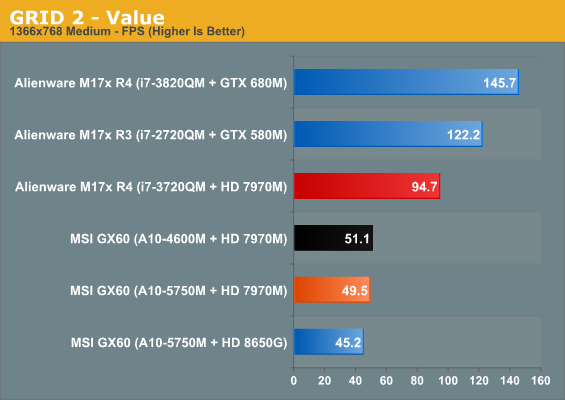
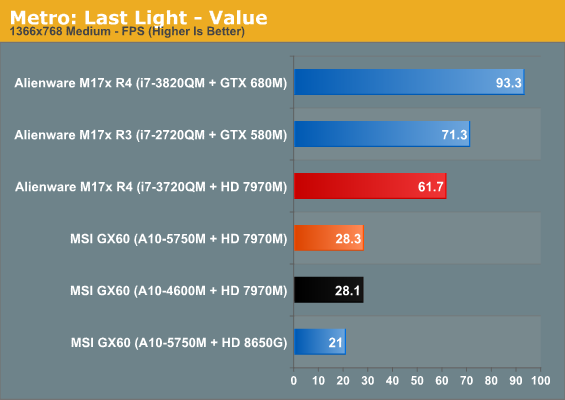
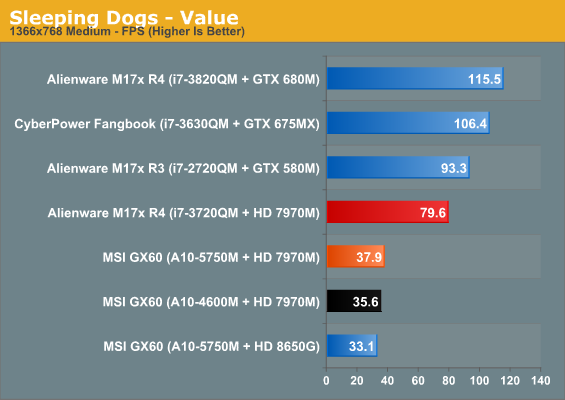
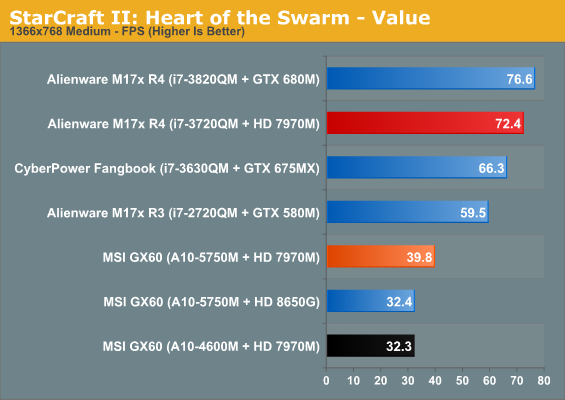
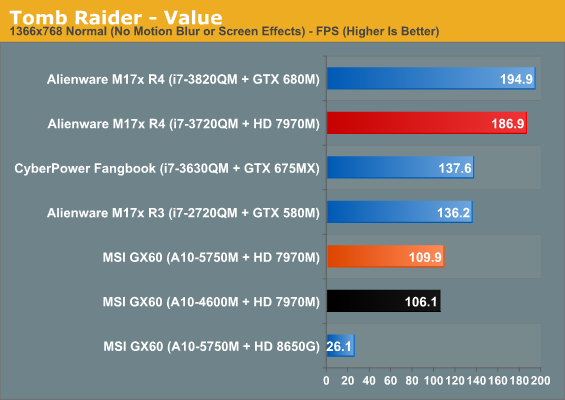
At our "Value" settings, it's clear Richland is giving the 7970M at least a little more performance headroom, but the gulf is massive compared to the way Ivy lets it stretch its legs. Metro: Last Light seems to be a bit of a bizarre outlier, though. Metro 2033 used to hammer the GPU almost exclusively, but times seem to have changed with the new release.
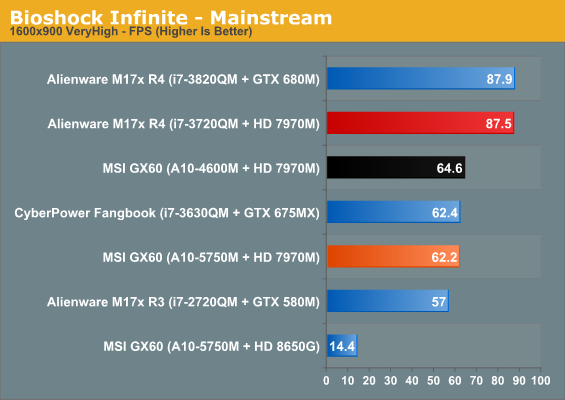
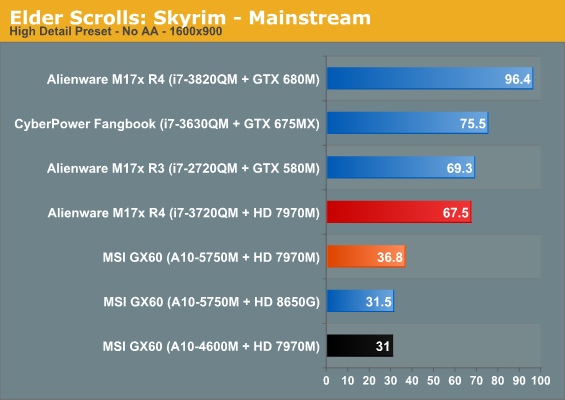
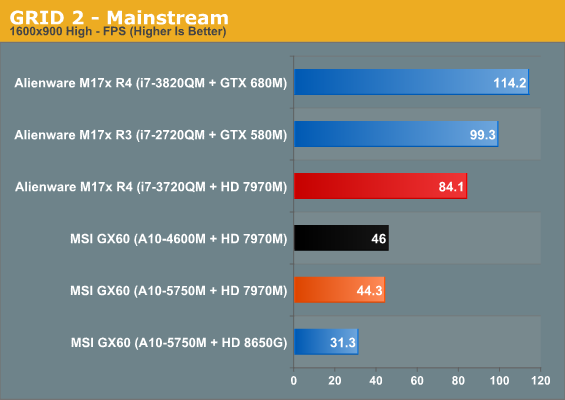
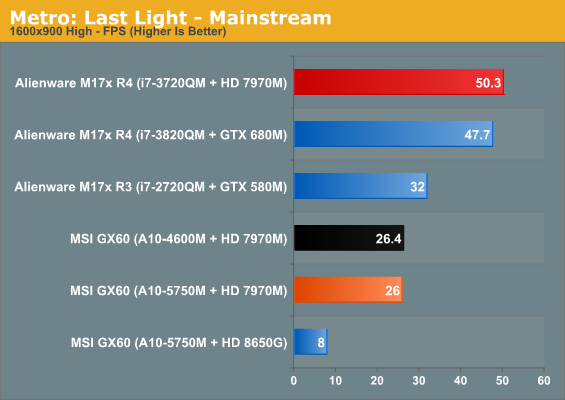
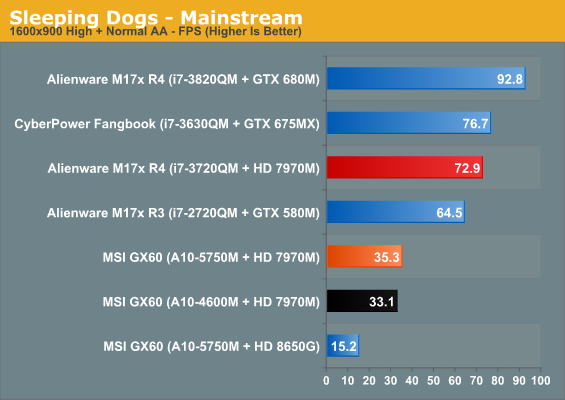

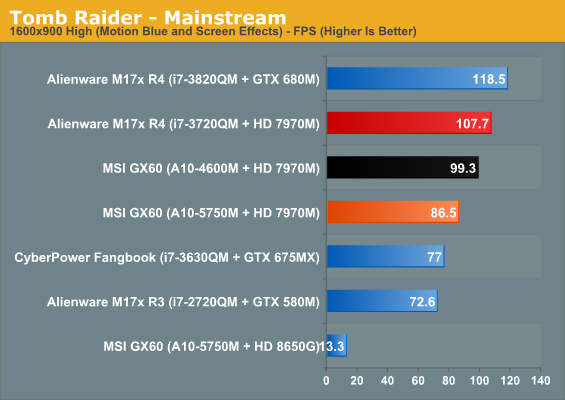
Mainstream performance actually demonstrates the same kind of weird wash between Trinity and Richland that I experienced testing using the IGP. It's only Tomb Raider that takes a bath with Richland, though, and even then it's still very playable. While our settings here help close the gap between the Alienware M17x R4's 7970M and the MSI GX60's, we're still obviously leaving a lot of performance on the table. Metro: Last Light in particular continues to be unplayable.
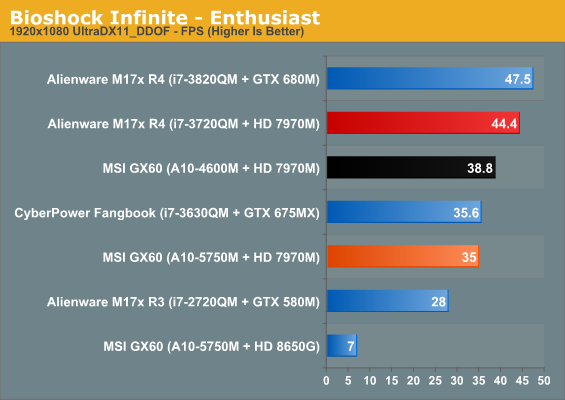
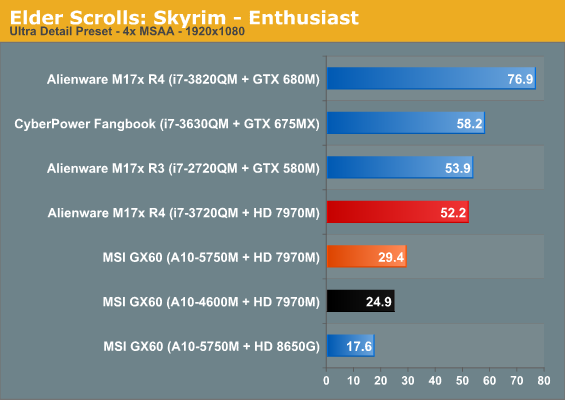
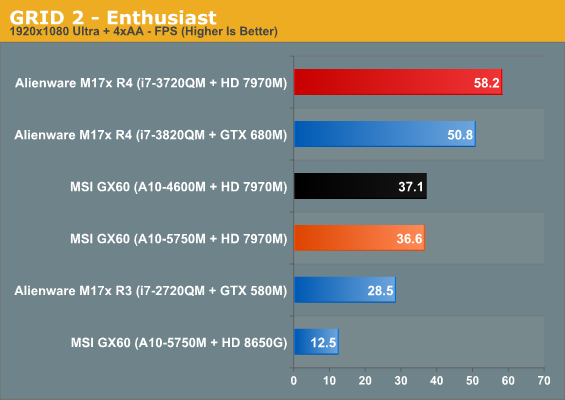
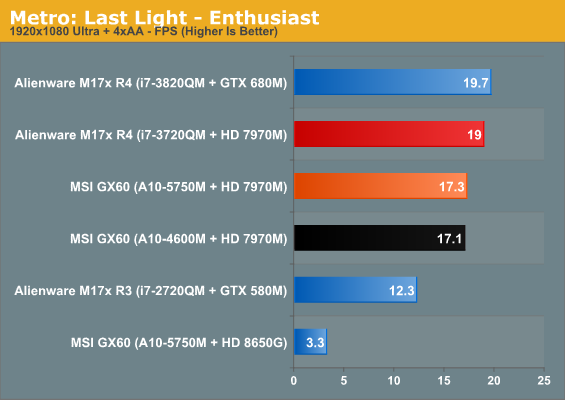
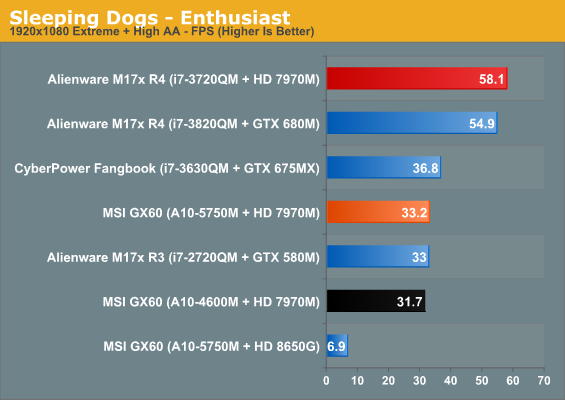

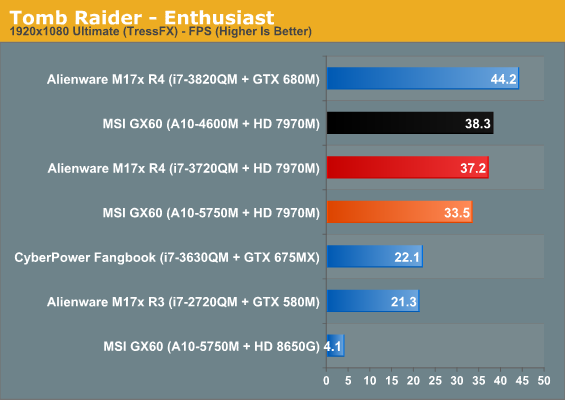
In some cases, enthusiast settings allow the GX60's 7970M to come within striking distance of the M17x R4's. Generally speaking, though, we still have a lot of performance left on the table, and it's sometimes even the difference between a game being playable and not. In situations where we're severely GPU limited (Tomb Raider with TressFX, for example), the GX60 makes a very strong case for itself. The problem is that in other situations, the GTX 675MX (and by extrapolation, the slightly slower GTX 765M) winds up producing a better experience because the CPU isn't bogging it down.










69 Comments
View All Comments
Sabresiberian - Saturday, June 29, 2013 - link
People can talk about how games don't need powerful CPUs all they want, but the fact is, there IS a minimum requirement, and some games DO make use of the top end CPUs available. The more powerful your GPU, the more powerful the CPU needs to be to allow it room to work.This MSI notebook is built using one of the reasons I don't buy pre-built desktops, cutting corners on one part to spend money on another. It's bad design, it doesn't work (at least when the corners are cut to this degree), it makes for a system that is built cheap and shows it in its performance. Shame on MSI, they know better (or at least some of them do - maybe those people aren't in the notebook division).
"Balance" is the key to computer design, just as it is with many things in life.
Dustin Sklavos - Sunday, June 30, 2013 - link
For a while it was true, games by and large didn't really need powerful CPUs. Over about the past year or two that changed and changed *dramatically.* You're getting games that have a tremendous amount of complexity to them; graphics are practically the least of Skyrim's engine's worries, Crysis 3 has an incredibly rich and vibrant environment (despite being kind of crappy), and Tomb Raider is no different. It looks like TressFX takes its pound of flesh out of the CPU *and* the GPU.j_kut - Saturday, July 6, 2013 - link
Skyrim, Crysis3 and Tomb Raider run all maxed out on the GX60 except for 4*MSAA.Only Games not running smooth on this system are MMOs where the CPU is needed for all characters on-screen.
Being a GX60 owner myself I can totally recommend it, except you wanna play GW2 or similar stuff.
YukaKun - Sunday, June 30, 2013 - link
Where's the battery test with just the iGPU like you guys did with the i7?We need those numbers for bragging rights :P
Cheers!
JarredWalton - Sunday, June 30, 2013 - link
Battery testing is done with the dGPU inactive via Enduro, so these are the "best-case" battery life results for this particular notebook.Khenglish - Sunday, June 30, 2013 - link
I know that on optimus systems that the dGPU will still draw a little bit of power even when off. The motherboard still keeps the Vin line active, although the GPU core and memory VR's shut down. I tested this with a multimeter. The fact that the card is still visible to on the pci bus means it's still drawing a little power.It's probably only like half a watt, but it's something.
JarredWalton - Sunday, June 30, 2013 - link
Last I heard from AMD and NVIDIA, it's not even half a watt -- more like 100mW or something in that range. But until we get a system that only has a Richland APU with no dGPU, we can't really test what battery life is like. The GX60 is also a large system relatively speaking, so I'd expect a less performance oriented laptop to get much better battery life with Richland -- same goes for Haswell and IVB laptops.silverblue - Tuesday, July 2, 2013 - link
There's something else that needs to be addressed, if at all possible...The first GX60 had exceptionally poor CPU performance as evidenced by your article eleven days back. From your conclusions, you didn't think that it could have all been down to the CPU (perhaps Enduro was to blame?). So, have MSI fixed that with the second gen GX60, or are we just seeing a (pardon me) turd with go-faster stripes? One or two of the part 1 tests actually underperformed the Trinity prototype which was interesting.
A comparison between both GX60s would be an eye opener.
kwrzesien - Tuesday, July 2, 2013 - link
I'm ready for another page: GAMING PERFORMANCE PART 2Add (or replace) the HDD with an SSD and replace the memory with 2x4GB 1866MHz RAM. Rerun all tests and compare the incremental cost to the more expensive Alienware models. I would argue that the best memory and a good SSD with greatly improve the lags in CPU performance and free the dGPU to perform closer to an i7. Definitely not going to catch it, but closer...
Wolfpup - Tuesday, July 2, 2013 - link
This continues to be an intersting system. I wish AMD would put out a higher end mobile CPU. Since their A series is roughly 50/50 CPU/GPU, there's no reason they couldn't dump the GPU portion and replace it with another 4(ish) cores, and/or clock things higher with a 45 watt TDP.